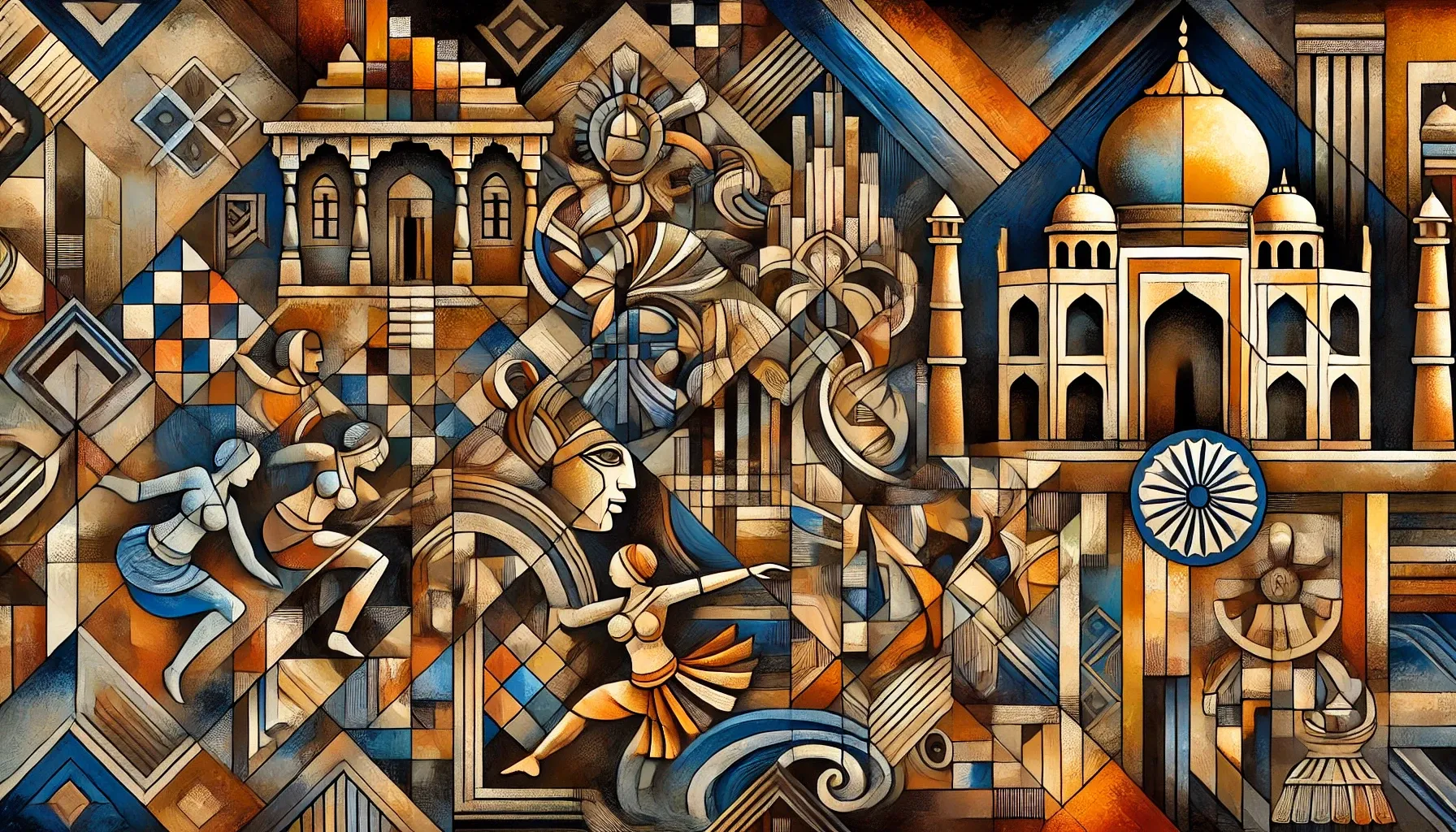UPSC
Indian Express Concise
Cubism’s Journey in Indian Art
Last Updated
27th March, 2025
Date Published
27th March, 2025
Share This Post With Someone

Context:
Published on March 27, 2025, in The Indian Express, this article traces the evolution of Cubism, a groundbreaking 20th-century art movement pioneered by Pablo Picasso, and its adaptation in India. It highlights how Indian artists like Gaganendranath Tagore and M.F. Husain infused Cubism with local traditions, creating a unique artistic identity, as showcased in the “Deconstructed Realms: India’s Tryst with Cubism” exhibition at DAG gallery, Delhi, from February 8 to April 5, 2025.
Key Information Points:
- Cubism’s Origin: Emerging in the early 20th century, Cubism broke from traditional perspectives, using distortion and fragmented forms to challenge artistic norms, pioneered by Picasso and Georges Braque.
- Phases of Cubism: Analytic Cubism (1907-1912) featured muted palettes and fragmented shapes, while Synthetic Cubism (1912-1914) introduced brighter colors and collage elements.
- Arrival in India: Cubism reached India in the 1910s, notably linked to the 1922 exhibition by The Indian Society of Oriental Art in Calcutta, showcasing Bauhaus-influenced works alongside Indian artists like Gaganendranath Tagore.
- Early Proponents: Gaganendranath Tagore (1867-1938), Ramkinkar Baij (1906-1980), and N.S. Bendre (1910-1992) were among the first to adopt Cubism, followed by F.N. Souza (1924-2002), M.F. Husain (1915-2011), and Paritosh Sen (1918-2008).
- Gaganendranath Tagore’s Role: Tagore’s works, like Dwarkapuri, blended Cubism with emotion-driven diagonal compositions, distinct from European static forms, earning praise from art historian Stella Kramrisch for their lyrical expressiveness.
- Indian Adaptation: Unlike Western Cubism’s geometric rigidity, Indian modernists infused lyricism and elegance rooted in ancient aesthetics, as noted by Ashish Anand, CEO of DAG.
- International Influence: Indian artists studying abroad, such as Ram Kumar under French Cubist André Lhote and Paritosh Sen meeting Picasso, incorporated Cubist techniques like two-dimensional planes and geometric abstraction.
- M.F. Husain’s Contribution: Dubbed the “Picasso of India,” Husain’s early works featured dynamic colors and bold brushstrokes in a modified Cubist style, manipulating space creatively.
- Exhibition Highlight: The “Deconstructed Realms” exhibition at DAG, Delhi, celebrates this fusion, showcasing how Indian artists adapted Cubism to reflect local traditions and modernist experimentation.
- Cultural Roots: Cubism in India drew from ancient traditions and museum collections, evolving into a fluid, contextually rich form distinct from its Western origins.
Key Terms:
- Cubism: Early 20th-century art movement using fragmented forms and multiple perspectives.
- Analytic Cubism: Phase (1907-1912) with muted colors and broken-down shapes.
- Synthetic Cubism: Phase (1912-1914) with brighter colors and collage techniques.
- Gaganendranath Tagore: Early Indian Cubist blending emotion with geometric forms.
- M.F. Husain: Modernist artist known as “Picasso of India” for his Cubist-inspired works.
- Indian Society of Oriental Art: 1907-founded group pivotal in introducing Cubism to India.
- Bauhaus: German art school influencing Cubism’s geometric and abstract styles.
Link To The Original Article – https://indianexpress.com/article/explained/explained-culture/cubism-art-picasso-india-husain-tagore-9909374/